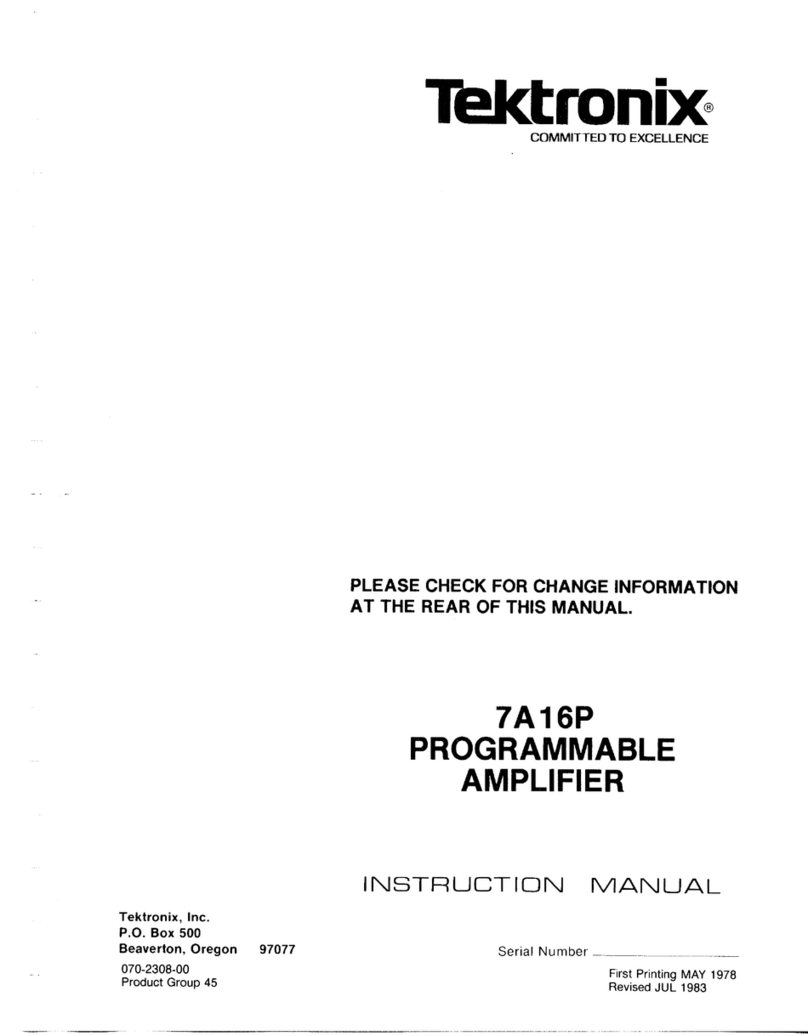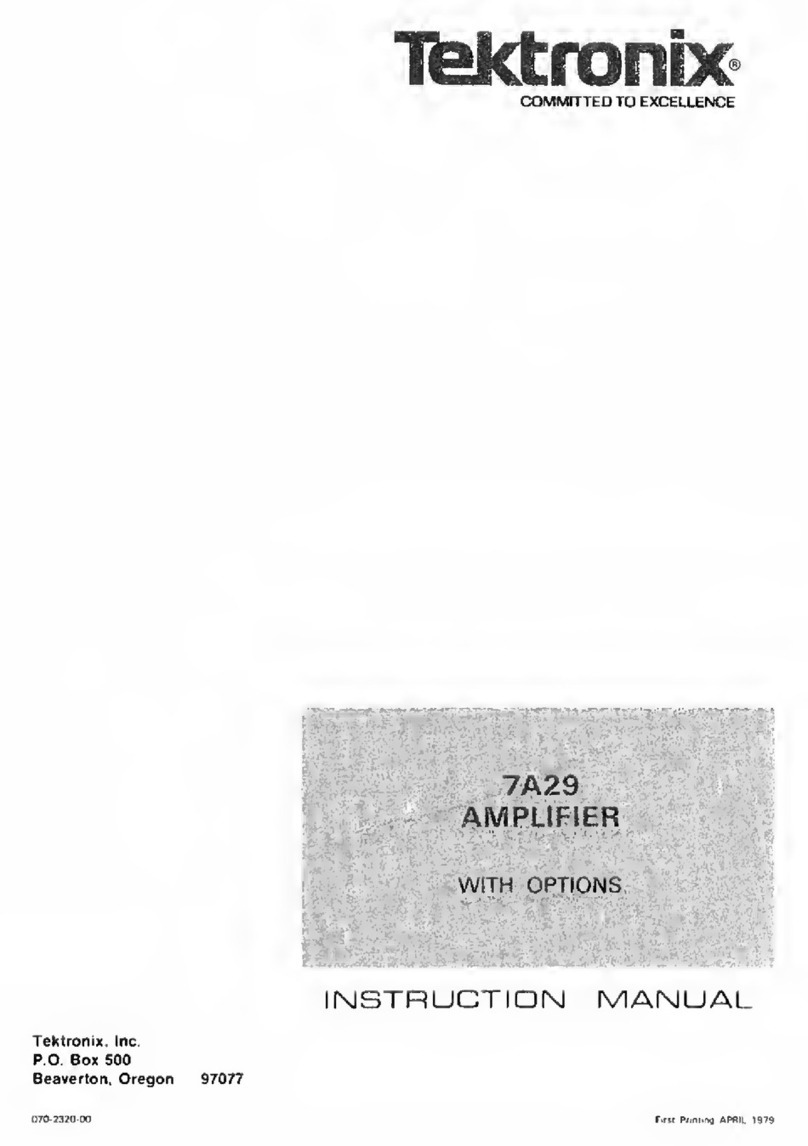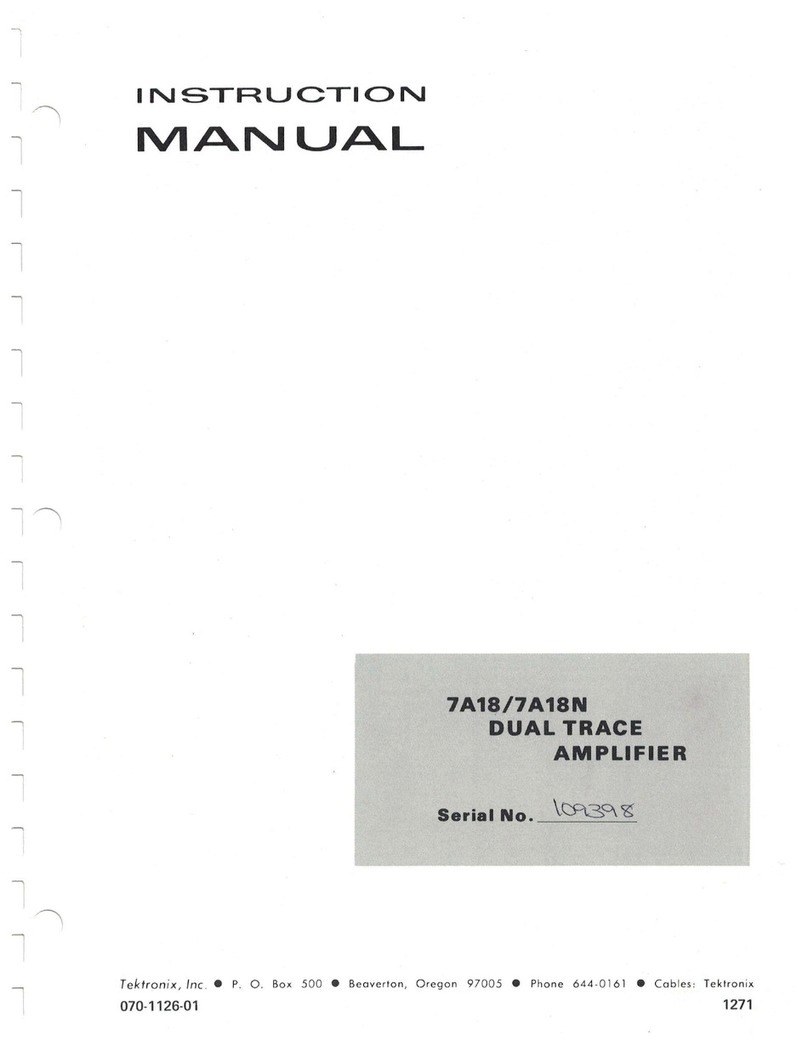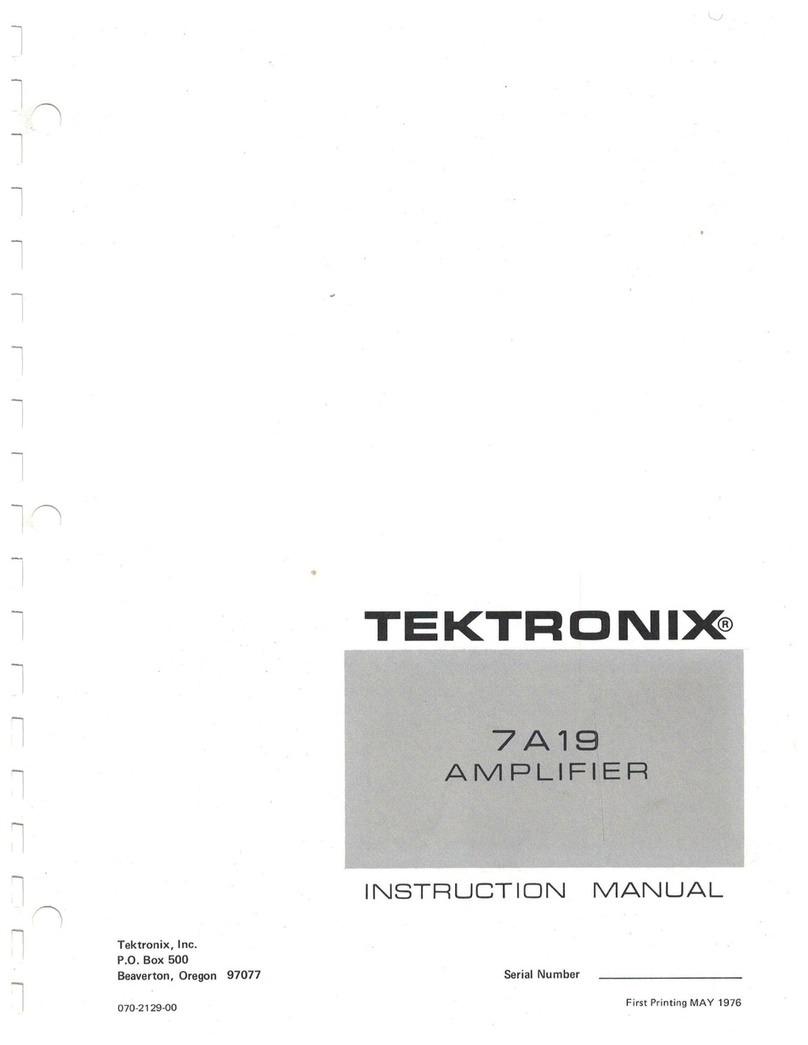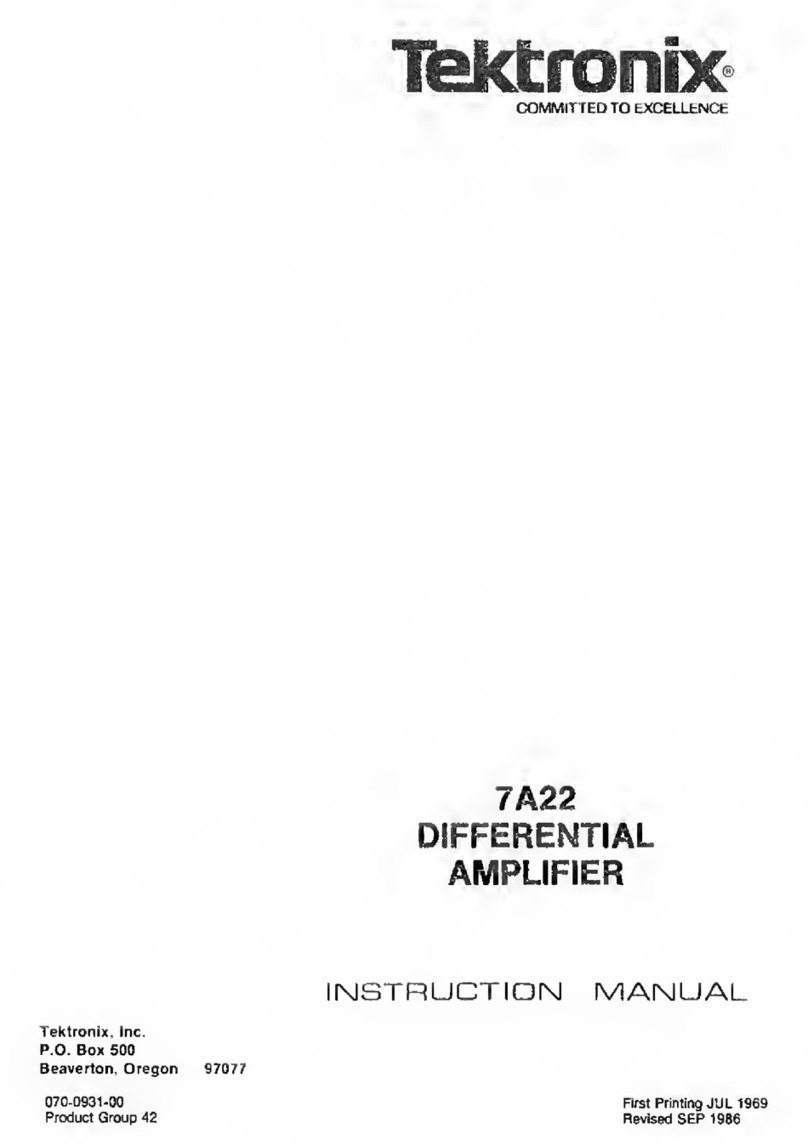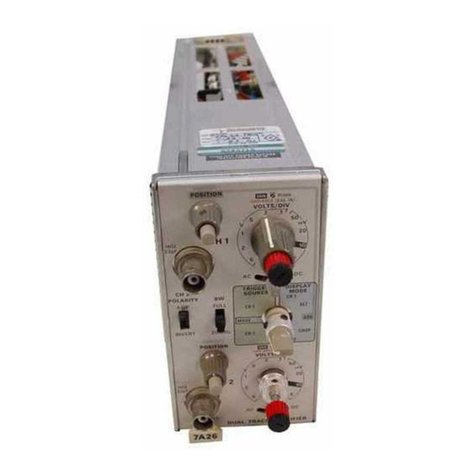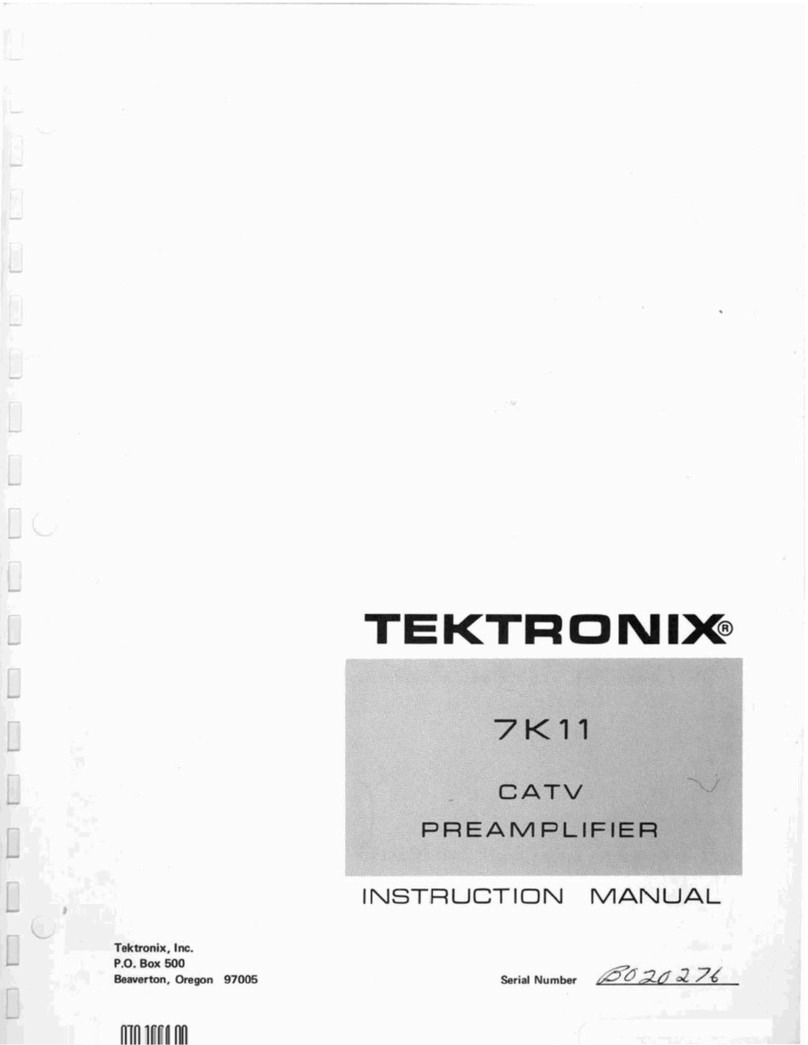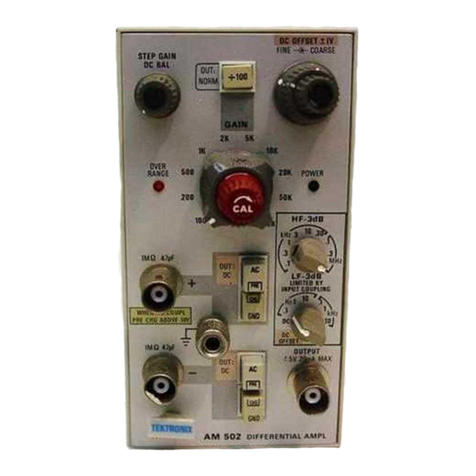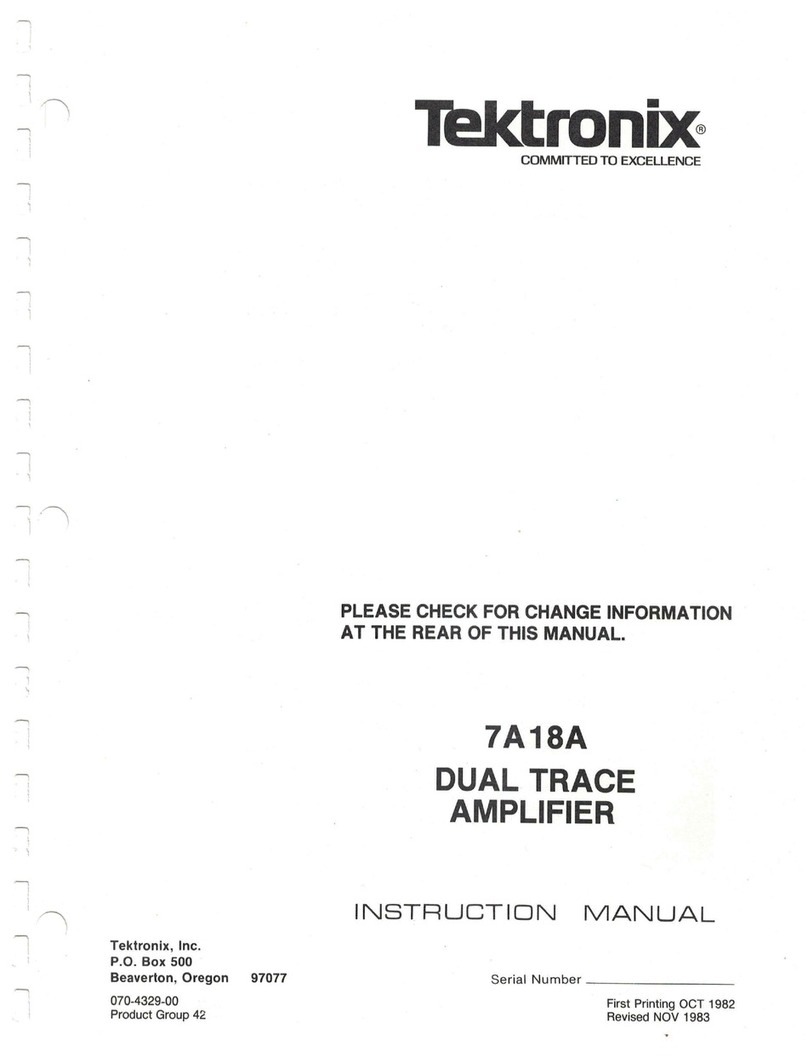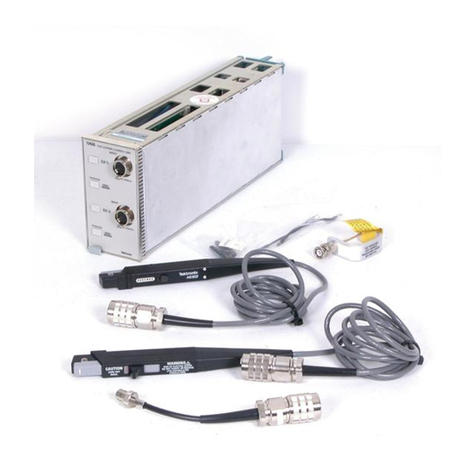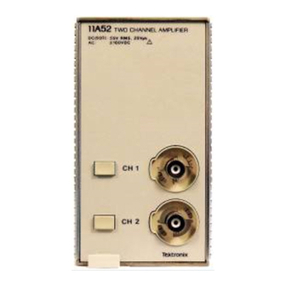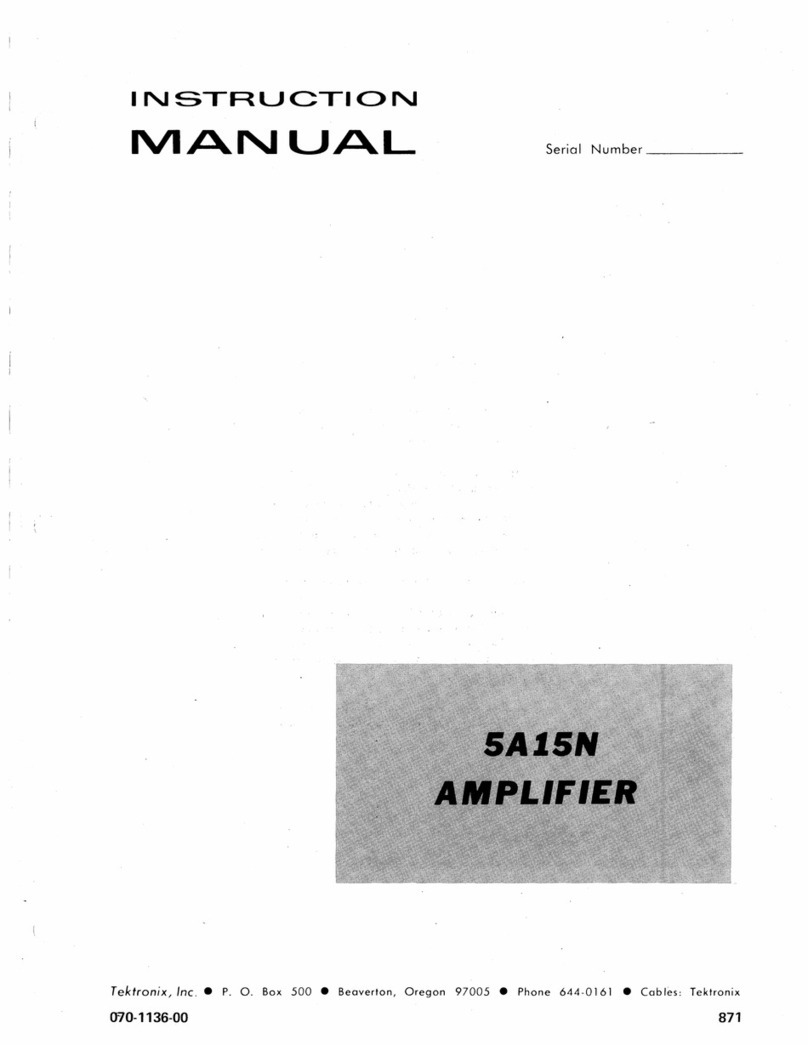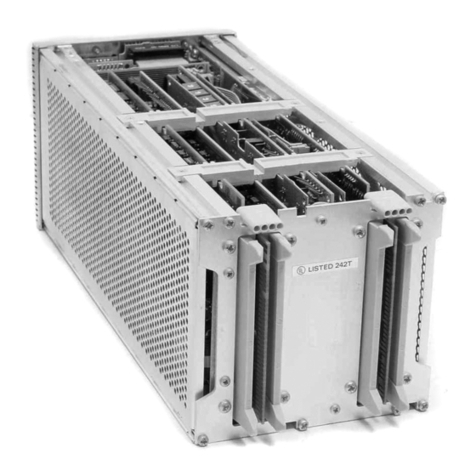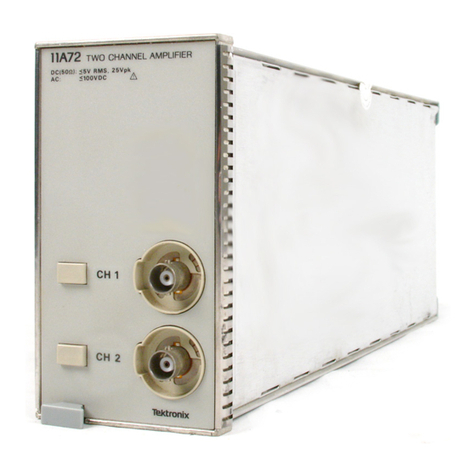
Operating Instructions—7A15A/7 A15AN
VOLTS/DIV, VARIABLE and MAG Controls
The amount of deflection produced by asignal is deter-
mined by the signal amplitude, the attenuation factor of
the probe, the setting of the VOLTS/DIV switch, the
setting of the VARIABLE Control, and the setting of the
MAG switch. Calibrated deflection factors represented by
the setting of the VOLTS/DIV switch apply only when the
VARIABLE control is in the CAL position (fully clock-
wise) and when the MAG switch is set to XI.
The VARIABLE control provides variable uncalibrated
settings between the calibrated steps of the VOLTS/DIV
switch. With the VARIABLE control set fully counter-
clockwise and the VOLTS/DIV switch set to 5volts/div,
the uncalibrated deflection factor is extended to at least 2.5
times the attenuator setting. By applying acalibrated
voltage source to the Input connector, any specific deflec-
tion factor can be set within the range of the VARIABLE
control.
The MAG switch increases the VOLTS/DIV switch
sensitivity by afactor of 10 when in the X10 position.
Thus, with the MAG switch set to X10 and the VOLTS/
DIV switch set to 5mV/div, the deflection factor is
extended to 500 pV/div. The MAG switch also effects a
circuit in the 7A15A which corrects the readout. With the
MAG switch set to X10, the bandwidth of the amplifier is
reduced. Refer to specifications in Section 1.
Polarity Switch
The POLARITY switch provides ameans of inverting
the displayed signal. With the POLARITY set to +UP, a
positive-going signal at the INPUT produces an upward
deflection of the CRT display. With the POLARITY set to
INVERT, a positive-going signal will produce adownward
deflection of the CRT display.
Trace Identification (7A15A only)
When the IDENTIFY button is pressed, the trace is
deflected upward about 0.3 division to identify the 7A15A
trace. This feature is particularly useful when multiple
traces are displayed on the CRT. In mainframes with read-
out, it also replaces the deflection factor readout with the
word "IDENTIFY".
When using a100X readout coded probe such as aP6009
(Tektronix Part No. 010-0264-01), the 7A15A encoding of
CRT readout is incorrect for anumber of VOLTS/DIV
settings. These incorrect readings occur with the MAG
switch in the IX gain position as follows: Actual: 50mV,
10V, 20V and IS, should read: 500mV, 100V, 200V and
IkV. If a100X probe is to be used with the 7A15A at
these sensitivities, in aCRT readout mainframe, it might be
preferable to defeat the probe coding and multiply the
plug-in VOLTS/DIV by afactor of 100 as in non-coded
operation. Possible means for achieving this is; use aP6009
Tektronix Part No. 010-0170-00 (no readout connector),
defeat the probe coding connection in the 7A15A by dis-
connecting R48, defeat the CRT readout entirely for the
7A15A by unsoldering the A37 and B37 cable connections
between the readout EC board and the mainframe EC
board.
APPLICATIONS
General
The following information describes the procedures and
techniques for making measurements with a7A15A/
7A15AN and the associated Tektronix oscilloscope and
time-base. These applications are not described in detail,
since each application must be adapted to the requirements
of the individual measurements. This instrument can also be
used for many applications which are not described in this
manual. Contact your local Tektronix Field Office or
representative for assistance in making specific measure-
ments with this instrument.
Peak-to Peak Voltage Measurements (AC)
To make peak-to-peak voltage measurements, use the
following procedure:
1. Apply the signal to the Input connector.
2. Set the Coupling switch to AC.
NOTE
For low-frequency signals below about 30 hertz, use
the DC position to prevent attenuation of the signal.
3. Set the VOLTS/DIV switch to display about five
vertical divisions of the waveform.
4. Set the time-base Triggering controls for astable
display. Set the Time Base to asweep rate which displays
several cycles of the waveform.
5. Turn the 7A15A/7A15AN POSITION control so the
lower portion of the waveform coincides with one of the
graticule lines below the center horizontal line, and the top
of the waveform is within the viewing area. With the time
base Position control, move the display so one of the upper
peaks lies near the center vertical line (see Fig. 2-1).
6. Measure the divisions of vertical deflection peak to
peak. Check that the VARIABLE control is in the CAL
position.
NOTE
This technique can also be used to make measure-
ments between two points on the waveform, rather
than peak to peak.
7. Multiply the distance measured in step 7by the
VOLTS/DIV switch setting. Include the attenuation factor
of the probe if used.
EXAMPLE: Assume that the peak to peak vertical
deflection is 4.5 divisions using a10X attenuator probe,
and the VOLTS/DIV switch is set to 1V.
REV. B, OCT. 1974 23


